Unbottled – Rosé Tasting
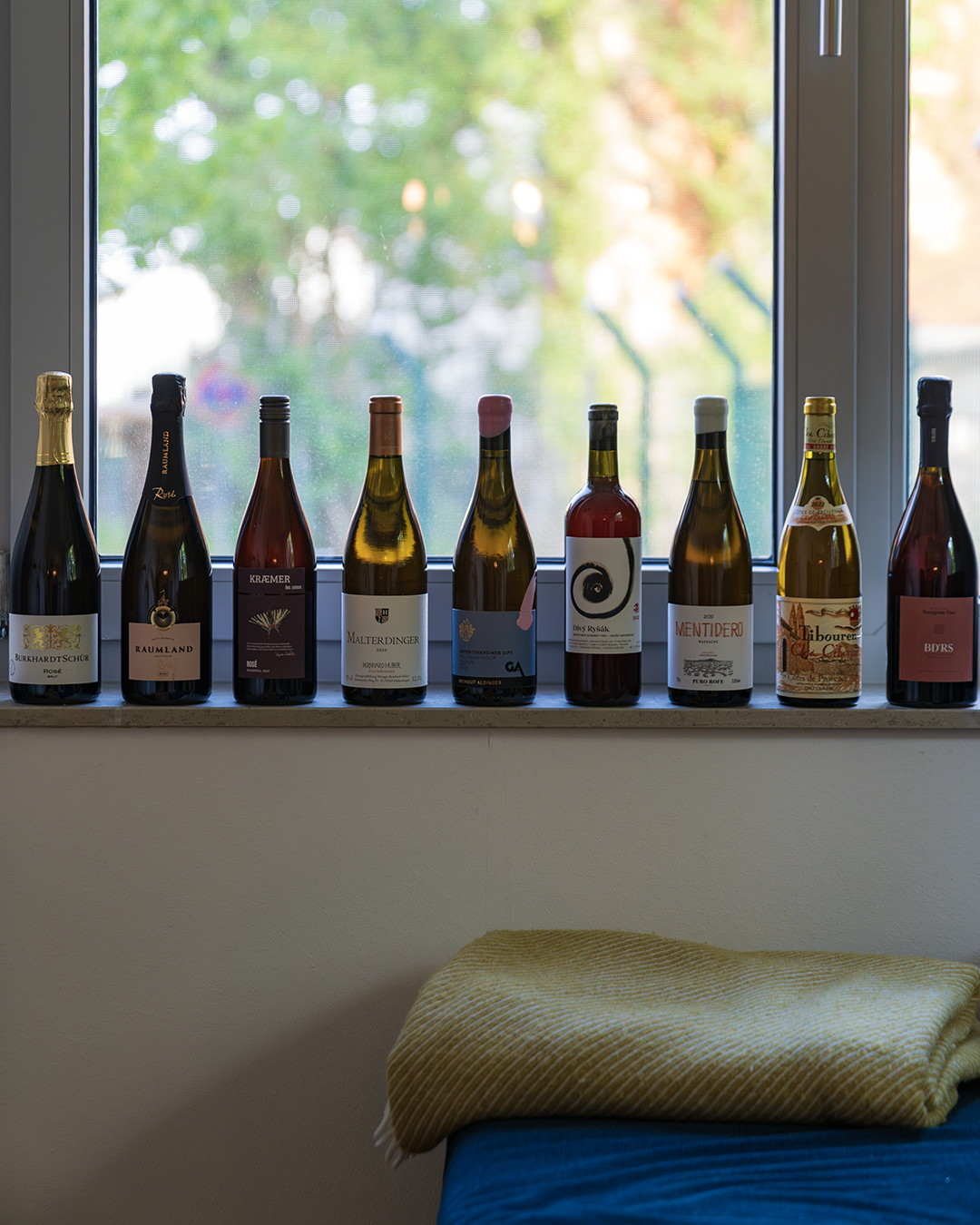
I know mid-September might be a bit late for a rosé wine tasting. However, this category has so much more to offer than just a simple summer sipper on a terrace. In fact, the tasting focused on ‘serious’ rosés. Yet, we also had some unusual ones.
Two sparkling wines
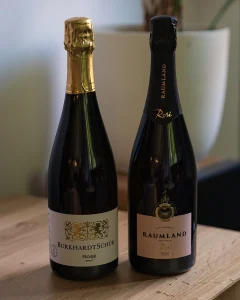
First, we started with two rosé sparkling wines from Germany as an aperitif. BurkhardSchür produced this German rosé sparkler using the classic Champagne grape combination with 75 % pinot meunier, 20 % pinot noir und 5 % chardonnay. Since Laura Burkhardt and Sebastian Schür buy their grapes from other winemakers the pinot meunier comes from the Taubertal region, the pinot noir from Buerkstadt and the chardonnay from the Kaiserstuhl. The base wine spends eleven months in double-piece barrels before the Tirage. Afterwards, the sparkling wines ages for 32 months on the yeast. During the disgorgement no sugar is added.
Refreshing sparkler
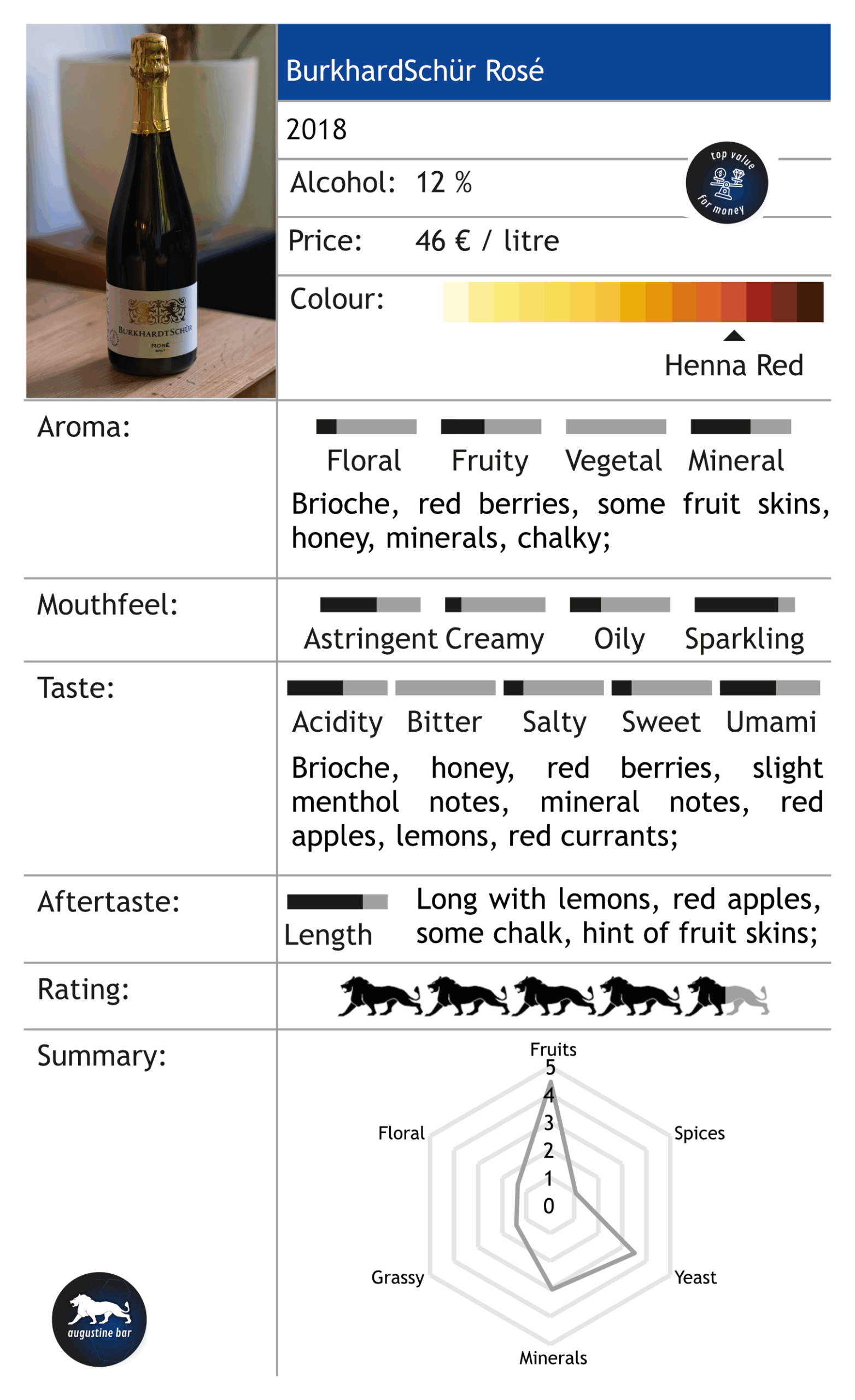
The BurkardSchür Rosé starts with typical rosé sparkling notes, such as red fruits and some Brioche. What makes it special is a delicate honey note with hints of fruit skins. I also detected some mineral flavours reminiscent of chalk. In the taste, I also found red apples, red currants and some lemons. The aftertaste is long with notes of citrus, red apples as well as chalk. This rosé was the highest rated wine in the tasting.
For the Raumland Rosé Reserve 2014, Volker Raumland uses a cuvée of 78 % pinot noir and 22 % pinot blanc. The grapes are gently pressed as whole clusters, fermented in stainless steel and the base wine is bottled without filtration. Next, the wine spends 90 months in the bottle on the yeast. Raumland gave the Rosé 2014 a dosage of 7 g / l.
A lot of yeast notes
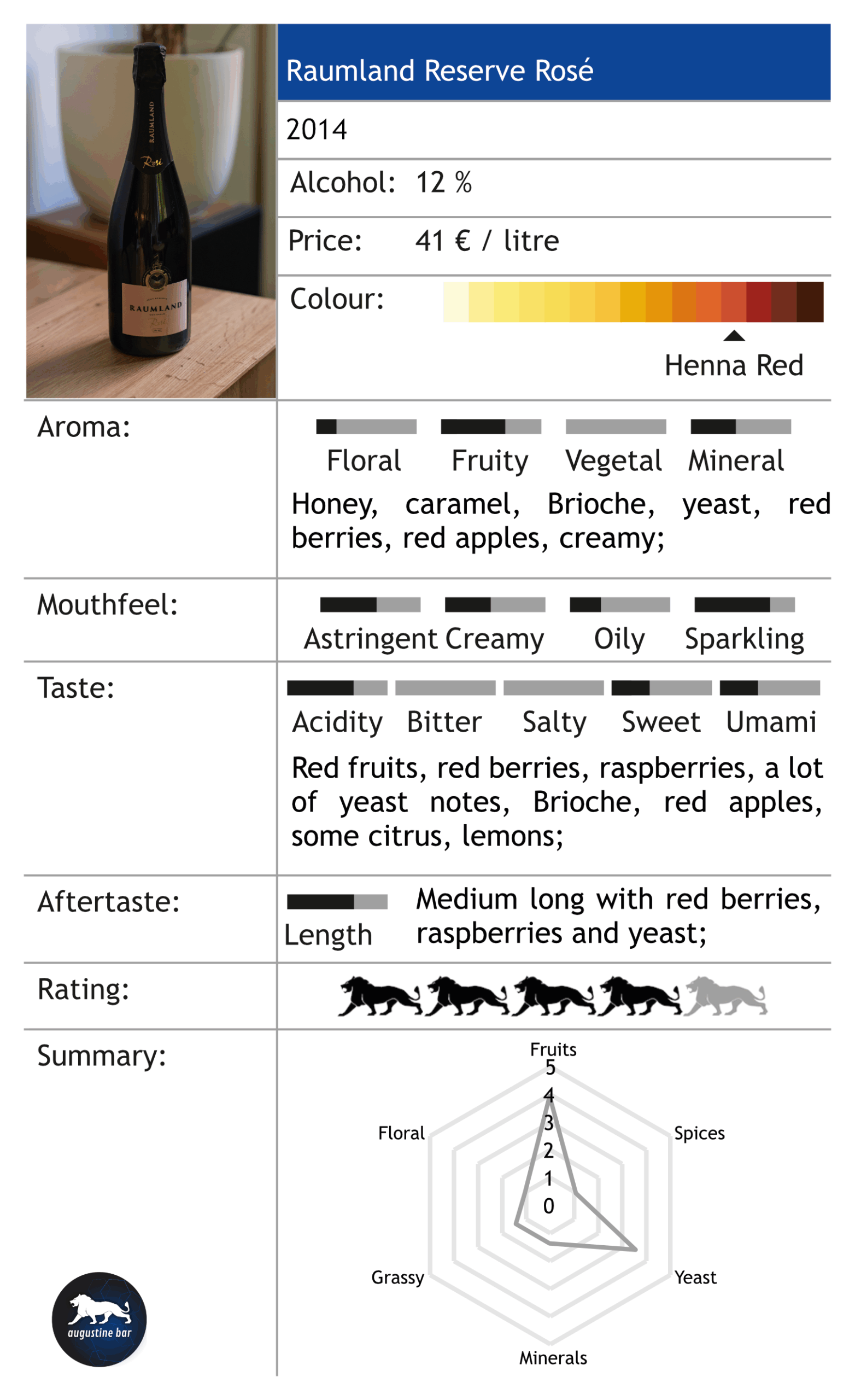
The Raumland Rosé Reserve 2014 opens with aromas of honey, caramel, Brioche, red apples and some creamy flavours. In the taste, you notice red fruits, Brioche and yeast stand out, along with red apples, lemons and some creamy notes. The aftertaste is long, with an increased presence of red berries and yeast. This sparkling wine received the second highest rating in the tasting.
Three German rosés
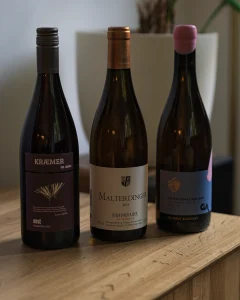
Next, we began the tasting of still wines with a flight of three German rosés. First was one of my personal favourites, the Oekologischer Landbau & Weinbau Kraemer Taubertal Rosé 2020, followed by the Bernhard Huber Malterdinger Spaetburgunder Rosé 2020 and the Aldinger Trollinger Rosé 2022. Stephan Kraemer directly presses a part of the pinot meunier grapes directly and uses the rest for an intercellular fermentation. These grapes then spend some time in the ‘Blanc de Noir’ portion. Overall, the wine spends almost 12 months on the yeast before bottling.

Almost red wine
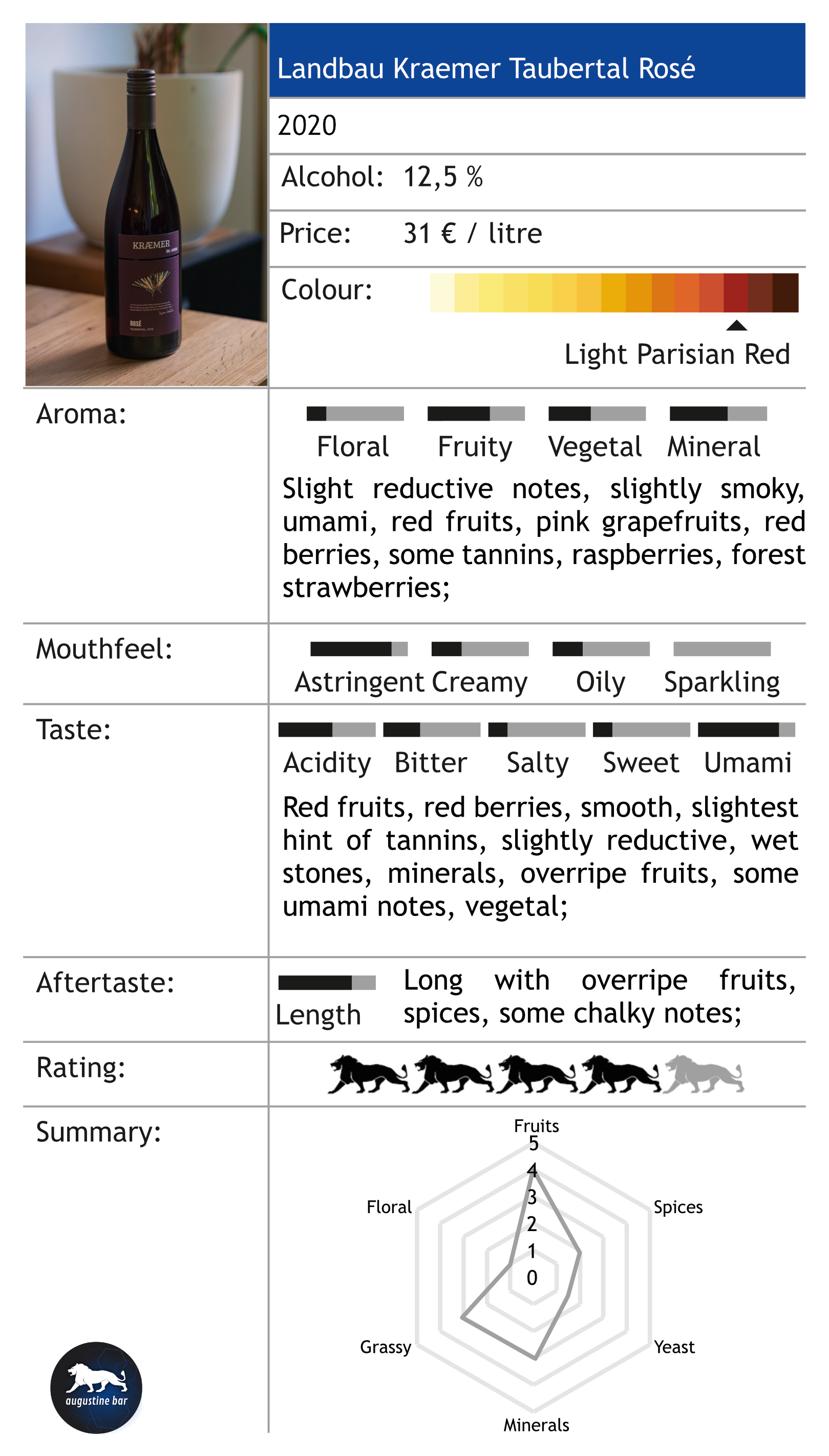
I was particularly keen on seeing how the Kraemer Rosé would compare with the other two German rosés. After all, I believe it is the finest Franconian rosé. Compared to the 2019 vintage that I tried a few years ago, the 2020 bottling has more reductive notes. However, with its hints of pink grapefruit, red berries, and subtle mineral and umami notes, it is quite complex. Its intense flavours and strong colour polarised the tasters to some extent. I still enjoyed the Taubertal Rosé very much and it was one of my highlights in the tasting. The important thing is to serve the wine at a slightly warmer temperature, either directly after opening or letting it breathe for three days.
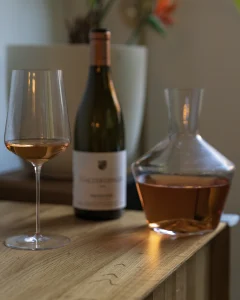
The Bernhard Huber Malterdinger Rosé probably needs little introduction, as it is widely regarded as one of the best German rosés. Yet, I will provide one anyway: Julian Huber uses early-harvested Pinot Noir grapes, which he carefully presses using a screw press, to make his rosé. Furthermore, he then ferments and ages the wine in used French barrique barrels, adding a small portion of new oak. Ultimately, the wine is bottled without filtration.
Reductive notes, but tameable
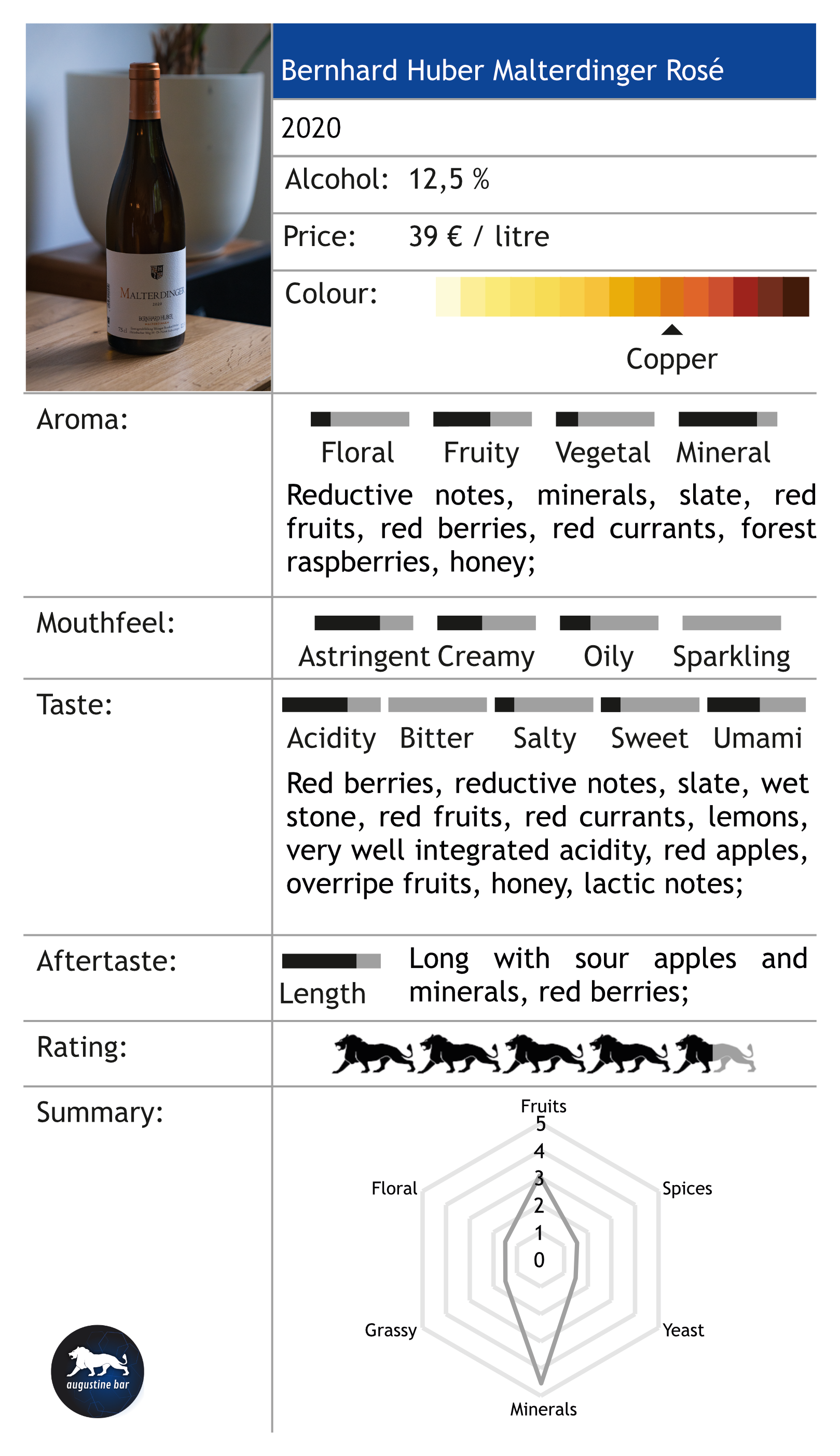
I tried the 2020 vintage at another rosé tasting this year. Yes, it was a great experience, but you have to be a fan of reductive and smoky flavours. The flavours are more subtle than in newer vintages, and decanting obviously helps too. Apart from that, you will only detect the slightest hint of fruitiness, with redcurrants and lemons coming through. The acidity is quite pronounced, but balanced nonetheless. However, the smokiness is almost completely gone by the second day after decanting. This made the rosé a favourite of many tasters. You can still detect a hint of smokiness in the taste, together with lots of mineral notes that remind me of slate. Apart from that, there were redcurrants and noticeable, well-integrated acidity, as well as hints of honey.
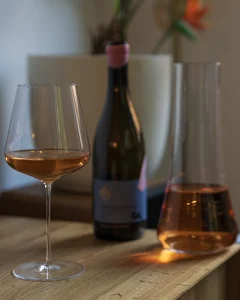
I just had to include the Aldinger Trollinger Untertuerkheimer Gips Rosé in this tasting. On the one hand the price tag just seemed out of this world for a rosé and on the other hand it comes from the very much underrated Trollinger grapes. Aldinger grow the grapes on their Untertuerkheimer Gips vineyard, which they own exclusively, on old vines. The whole clusters are directly pressed, fermented spontaneously with lots of sediment and aged for 15 months in barrique barrels.
Overwhelming reductive notes
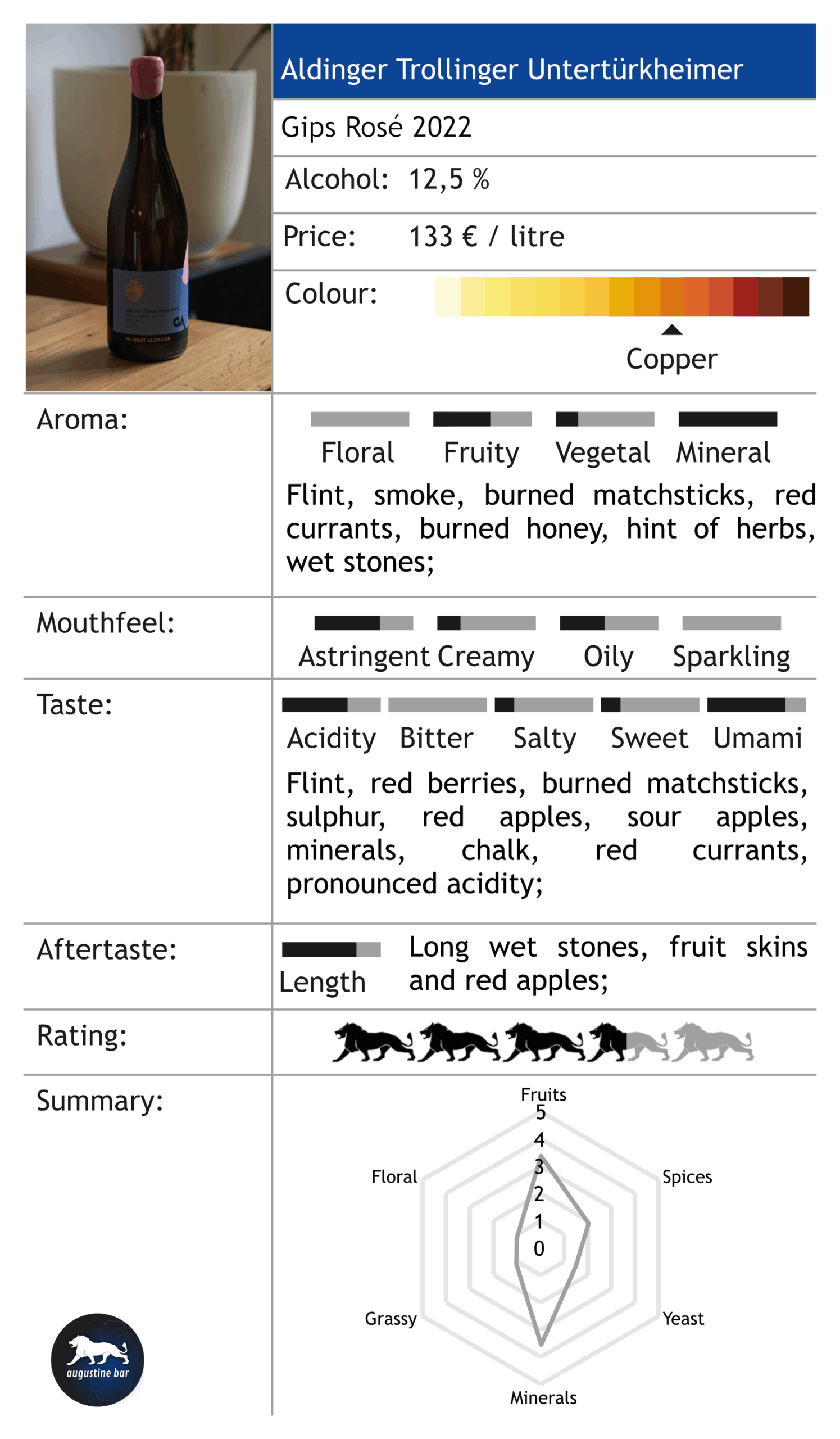
This is the most expensive bottle of still wine I have bought so far. It was certainly an experience. The reductive notes are at the same time more powerful than those of the Bernhard Huber Rosé, but also different. The Aldinger has a very smoky aroma with intense notes of flint and burnt matchsticks, but is different on the palate. There, the smokiness melts together with red apples and red berries. I also detected a hint of sulphur and a lot of chalky minerality. This way, the Trollinger Rosé also split the opinion of the tasters.
Some natural wines
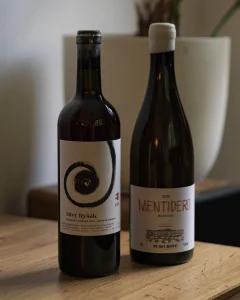
The next flight of wines in the tasting broke with convention focusing on natural rosés. The first was the Puro Rofe Mentidero Lanzarote Blanco 2020 and the second the Richard Stavek Divý Ryšák 2021. Interestingly, the first wine in this flight is not actually sold as a rosé. It comes from the Canary Island of Lanzarote. Carmelo Peña blends white wine and red wine to create the ‘Blanco’. The white varieties Malvasia Volcanica and Listan Blanco spend some time in barriques whereas the red Listan Tinto and Diego grapes are fermented and aged in stainless steel. After blending the resulting wine spends another six months in stainless steel before being bottled without additional sulphur.
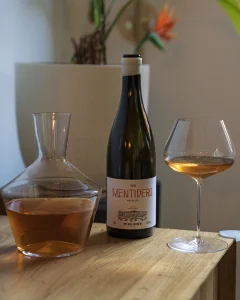
Minerals, minerals, minerals
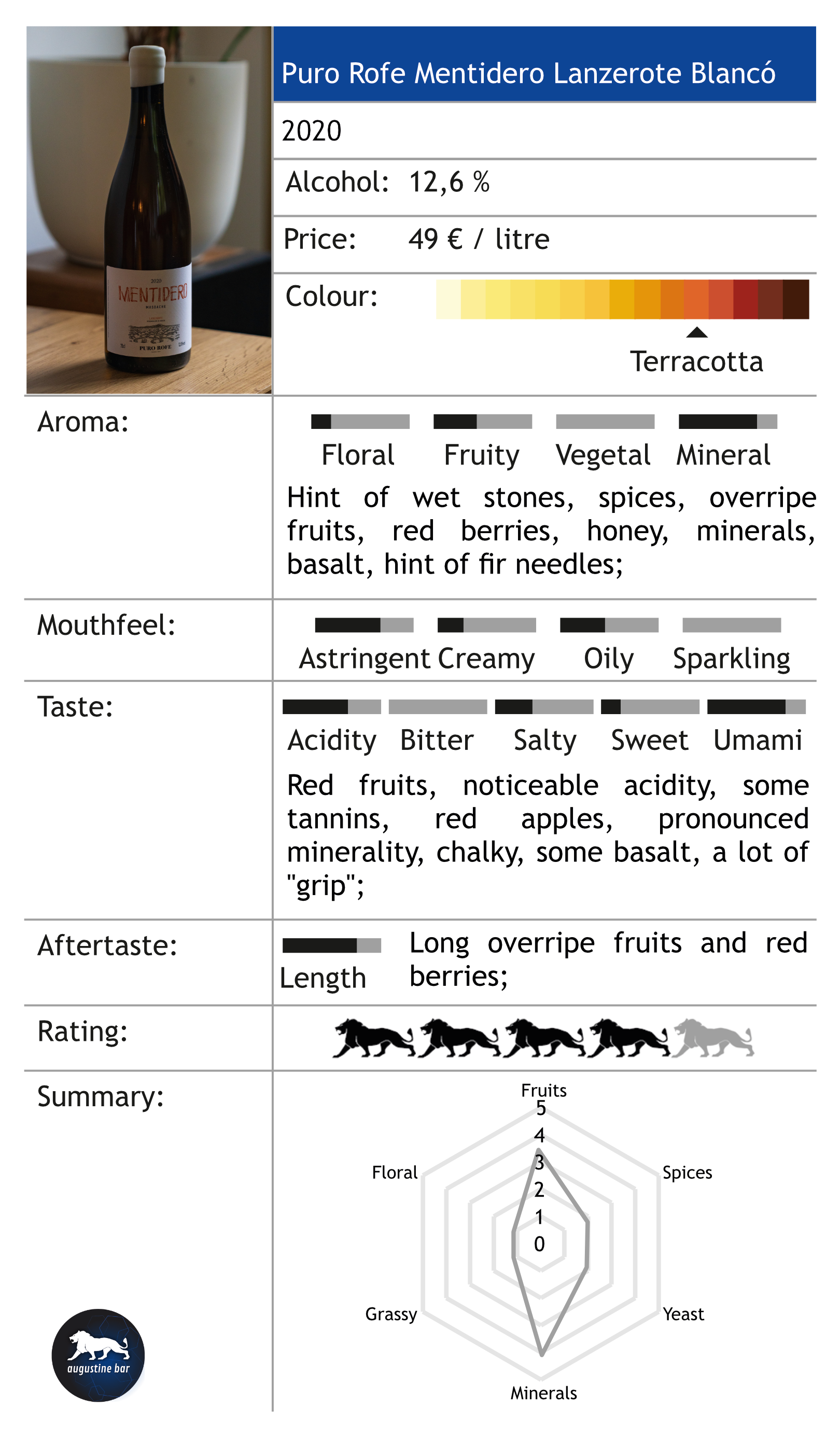
I was very curious about the Mentidero and I can savely say that I was not disappointed. The wine starts with slightly reductive flavours, but these soon open up. You can then detect overripe fruits and a hint of red berries. However, the wine’s masterpiece is its mineral notes. Initially, the combination of a touch of red berries and notes of chalk, basalt and slate can be a little confusing. Nevertheless, with some air, everything blends together beautifully. The resulting high ratings showed this, too.
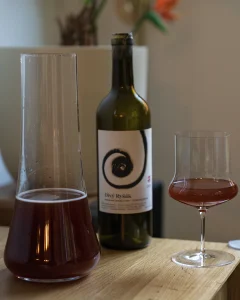
The Richard Stavek Divý Ryšák comes from a mixed-lot containing Blaufraenkisch, Portugieser, Welschriesling, Isabella as well as Gruener Veltliner varities. The vines are older than 45 years. Richard crushes the whole clusters by foot after an open vat fermentation. The resulting wine spends a year in used, acacia wood barrels varying in sizes with Batonnage. The wine also is bottled without the addition of sulphur.
Herbal berry tea
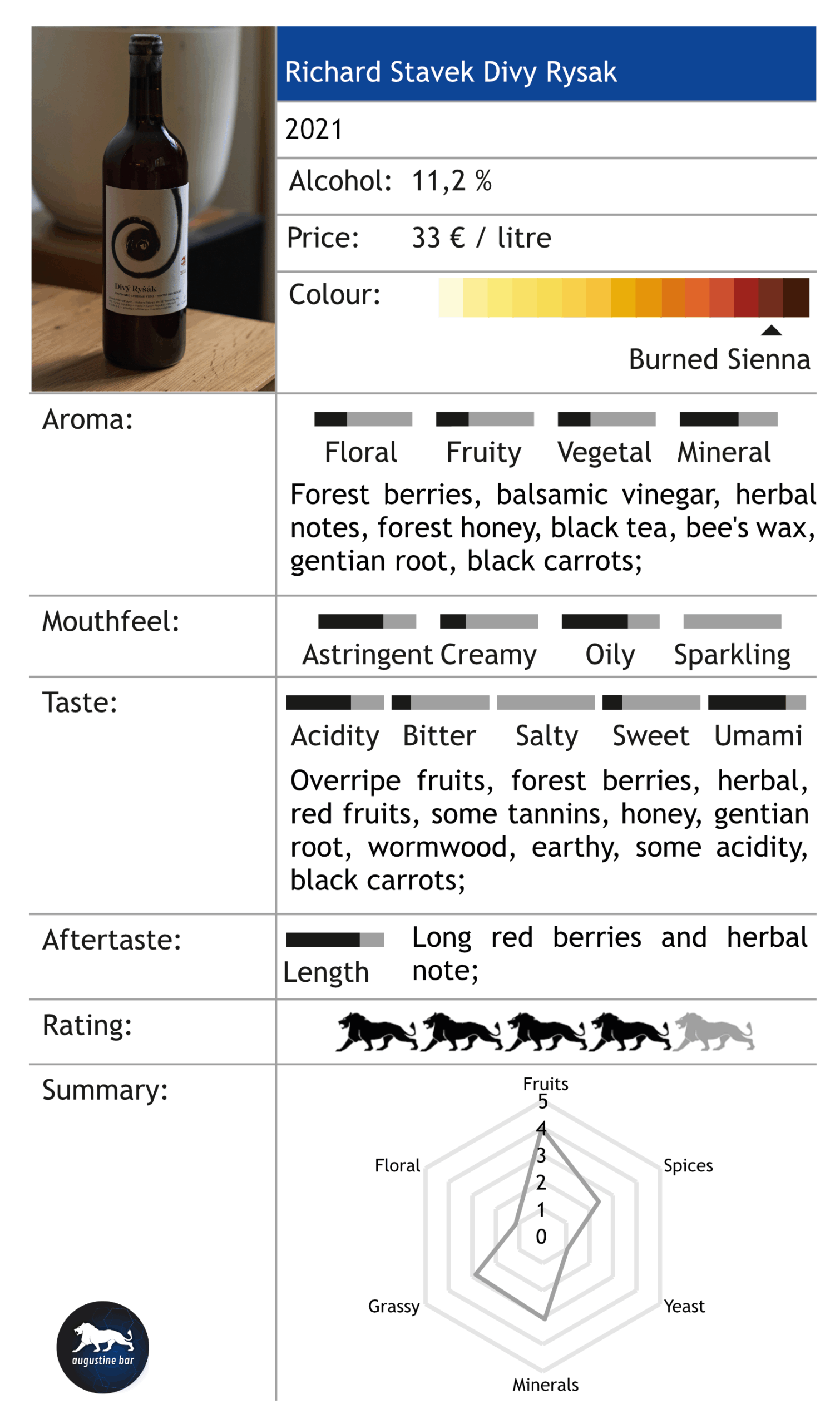
By now, it should come as no surprise that every wine from Richard is right on the edge what you can call “wine”. The colour alone serves as a warning that your palate will experience something way different from your regular rosé. When opening the bottle, you initially get a intense berry mix aroma. However, these flavours are soon replaced by balsamic notes accompanied by hints of forest honey, herbs, black tea and beeswax. I found wormwood in the taste again, as well as an almost Amaro-like bitterness. After a day or two, the wine mellows down a bit. Surprisingly, despite its unusual colour, the wine won over many tasters.
Two French wines
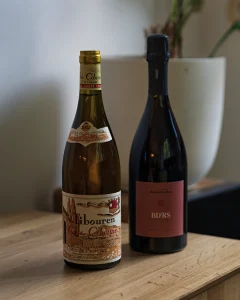
Last but not least, the tasting was lacking some French wines. So, we tried the Clos Cibonne Rosé Tradition 2022 as well as a 2021 Saignée champagne from Bourgeois Diaz, too. Even while the Clos Cibonne is located in the Provence region, their wines differ from typical southern French rosés. The cuvée consists of 90 % Tibouren an autochthonous variety as well as 10 % Grenache. The directly pressed wine ferments and ages in very old 2600 l barrels under flor for a year. Afterwards, the wine spends some time in stainless steel for homogenization.
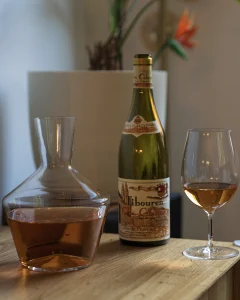
Classic rosé flavours
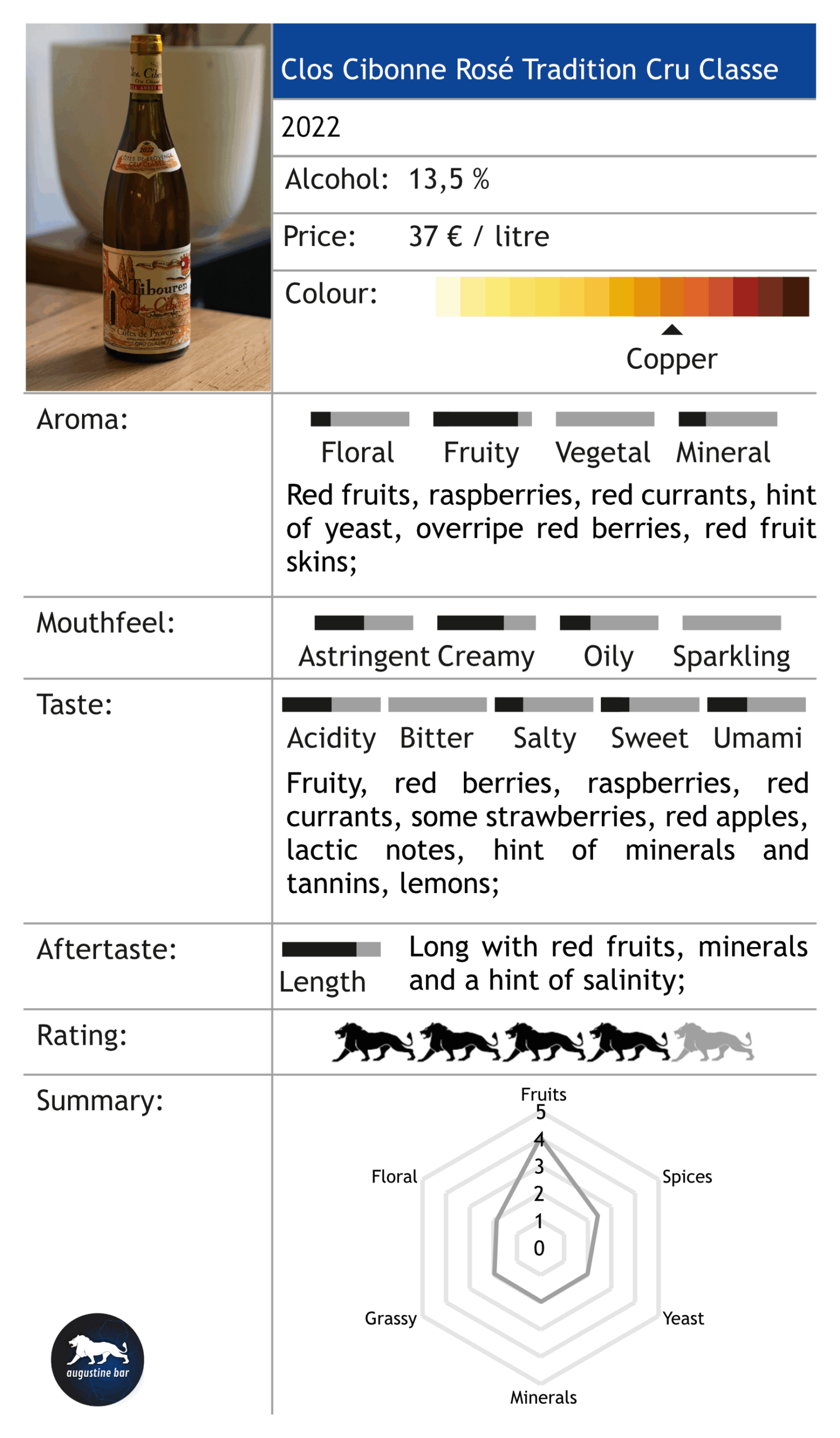
Although Clos Cibonne produces its Rosé Tradition differently to other standard Provençal rosés, it has one of the most “conventional” rosé tastes. There are lots of red berries in the aroma, especially raspberries and redcurrants. The taste is then a combination of red fruits, with a hint of apple and some lactic notes. Towards the end, a hint of tannins and minerals emerges. This was probably the most “crowd-pleasing” wine of the whole tasting.
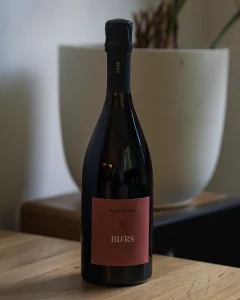
I just had to include a rosé champagne in this tasting. In contrast to the two sparkling wines at the beginning, Jérôme Bourgeois uses the free-run juice according to the Saignée method to produce his BD’RS. The 2021 vintage consists of 70 % pinot noir and 30 % pinot meunier due to frost damage. Usually, the pinot meunier makes up the majority. The wine has some skin contact for up to 24 hours, 80 % of it ferment in stainless steel and 20 % in barrique barrels. Ageing takes place in used barriques. After the second fermentation in the bottle, the wine spends 36 months on the yeast.
Not your conventional rosé champagne
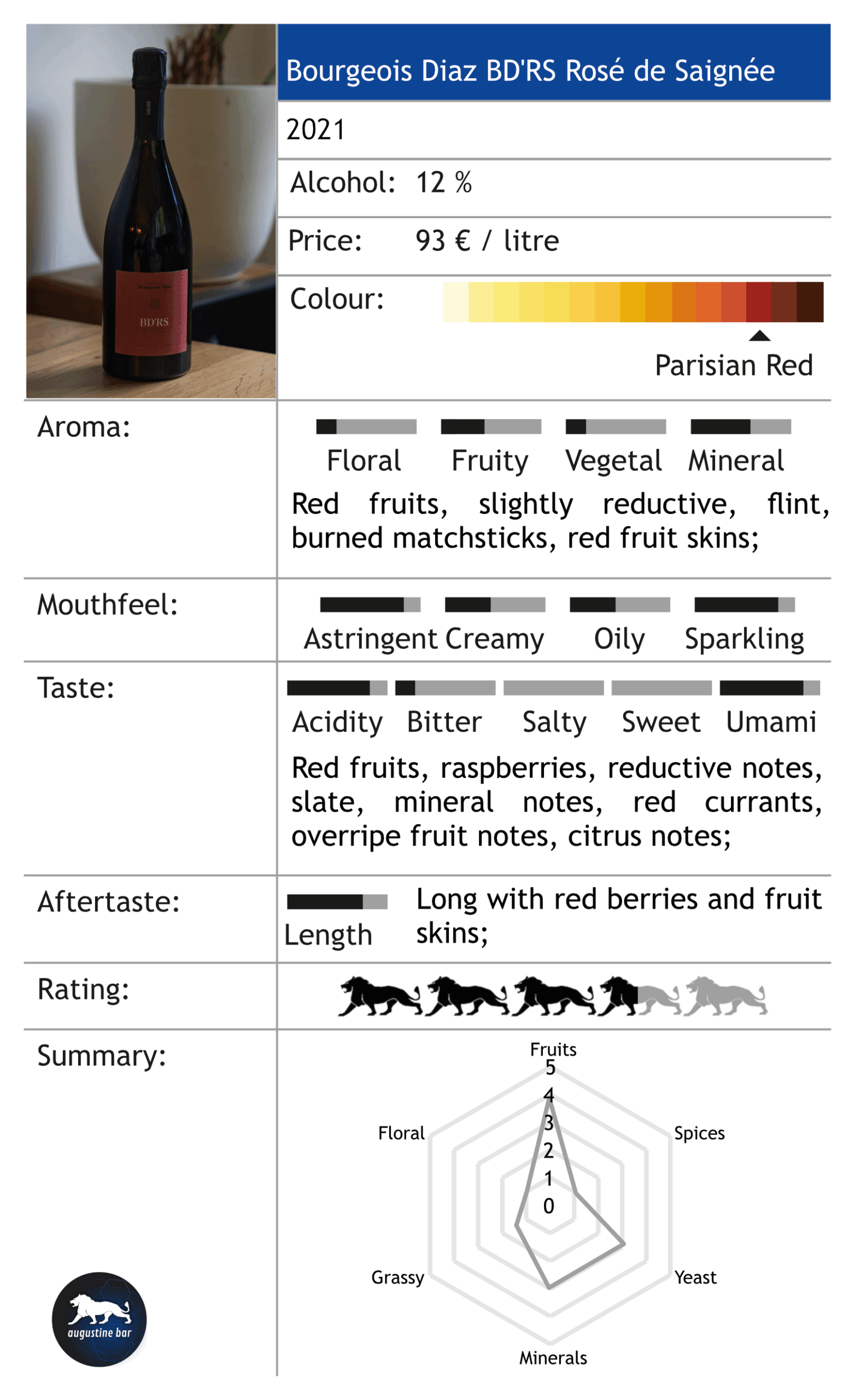
The Bourgeois Diaz Rosé was certainly not to everyone’s taste. It opens with reductive notes, followed by noticeable tannins. The carbonation enhances these flavours even further. On top of that, there are red berry notes and plenty of minerality. I found the flavour to be very unique and interesting. However, I can understand why others might have found it a bit overwhelming. This is certainly a very complex bottle of champagne.
*The fact that I received a product reviewed in this article for free, did not – in any way – influence the rating of said product. I received the Bernhard Huber Rosé for free from KierdorfWein and a discount on the Bourgeois Diaz Rosé by Einfach Wein Kaufen.

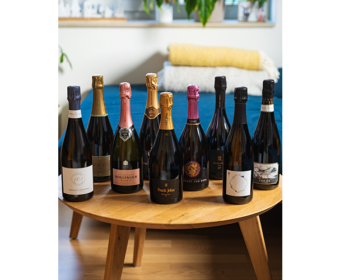
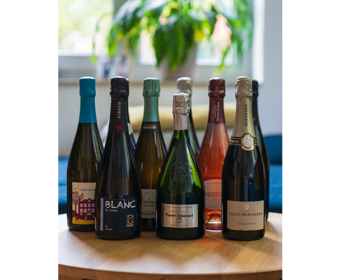
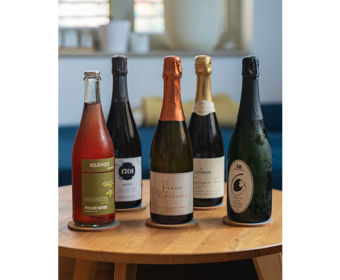
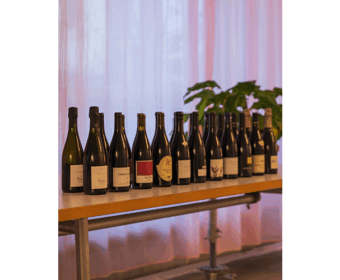
One thought on “Unbottled – Rosé Tasting”